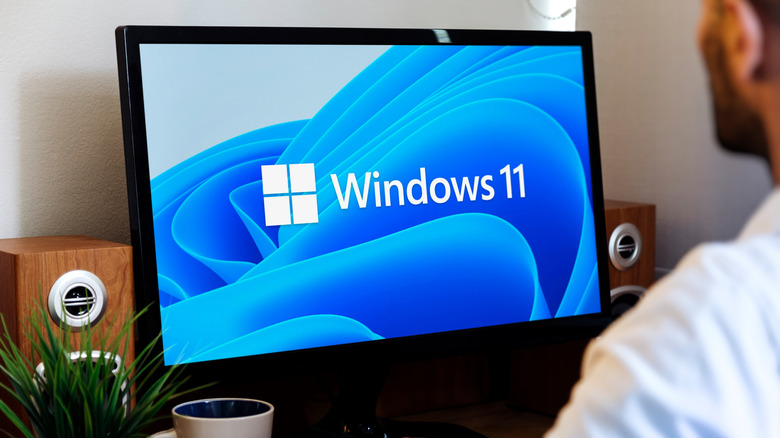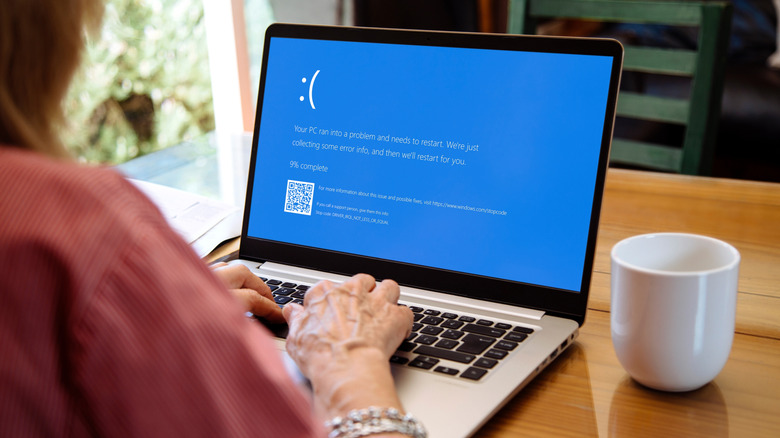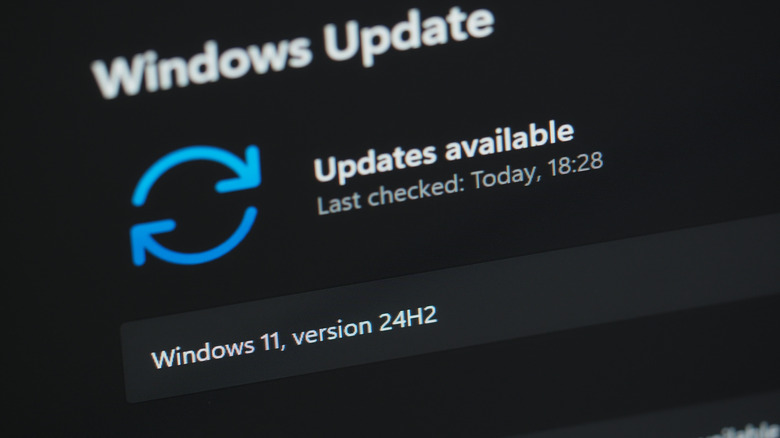Why It's Finally Time For Windows 10 Users To Upgrade To Windows 11
The debate over which version of Windows is the greatest has raged for decades, but Microsoft is losing patience with sticklers who refuse to upgrade. For a significant number of users, Windows 10 is too familiar to leave behind. As of this writing, a whopping 52 percent of PC users are still rocking the last-generation OS, while just shy of 43 percent are running Windows 11, which launched in October of 2021. It's clear Microsoft isn't happy with those numbers, so it's taking matters into its own hands.
Microsoft hasn't done itself any favors in its quest to broaden adoption of Windows 11. Public perception of the OS hasn't improved too much after a rocky launch several years ago that was plagued by decreased functionality for some of the most frequently interacted with parts of the user interface. Controversy over new hardware requirements didn't help, and the addition of yet more data gathering and ads for Microsoft services within the OS didn't go down smoothly with users, either. Simply put: a lot of people hate Windows 11.
However, it's finally time for everyone still on Windows 10 to make the upgrade. Microsoft is set to implement a major change that will leave anyone who isn't using Windows 11 by the end of the year exposed to security vulnerabilities and bugs. Thankfully, changing a handful of experience-ruining Windows 11 settings fixes most of the biggest gripes with the OS. Here's why you should update to Windows 11 as soon as possible, and why the upgrade could still prove difficult for quite a few Windows 10 users.
Microsoft is ending Windows 10 support in 2025
Anyone still using Windows 10 in 2025 should be aware that Microsoft is dropping support for the operating system in October. That means no more Windows Updates, or even basic security patches. No, your computer won't force an update to Windows 11, but anyone who refuses to make the leap will be left to fend for themselves after end-of-life.
To be very clear, sticking with Windows 10 after support ends on October 14 will leave you exposed to untold vulnerabilities and bugs. Security risks compound the longer a computer goes without an update, as hackers and researchers discover exploits. During a modern OS's support cycle, regular updates are released to patch newly discovered vulnerabilities, so in the absence of updates, those dangers will become more well known, leading to a higher chance of attacks. Bugs and compatibility issues that crop up will also go unaddressed, which could eventually break workflows or even lead to critical failures. Organizations with large amounts of sensitive data, such as hospitals, law firms and courts, or insurance companies will be especially at risk after the end of life for Windows 10.
The move to end support for Windows 10 doesn't feel as sudden when judged against Microsoft's track record. Support for Windows 7 ended in January 2020, more than 10 years after its launch, with both Windows 8 and 10 released in that time frame. Windows 8, meanwhile, got support until early 2023, eight years after Windows 10 bowed and once again more than a decade after its own debut. Now, Windows 10 will also see end-of-life a few months after its tenth anniversary. However, thanks to controversial hardware requirements, some users might find themselves in a difficult position when they try to upgrade.
Microsoft isn't making the switch to Windows 11 easy for some users
One of the most persistent controversies surrounding Windows 11 has been its hardware requirements. Since launch, it has required PCs running Windows 11 to have a TPM 2.0 module, a secure hardware microcontroller that handles security and encryption related tasks. While most PCs shipped within the last decade meet this threshold, there was a lot of confusion around it at the time of Windows 11's launch as Microsoft rushed to clarify that, yes, it's a minimum system requirement. Even stranger, Microsoft put out a blog post in December 2024 stating that it was now allowing Windows 11 to be installed on systems that don't meet the minimum requirements, but stating that such PCs won't get any updates or support, essentially making it a terribly unsafe idea to do so. For users whose PCs aren't up to Windows 11's standards, Microsoft has a blunt recommendation: buy a new computer.
For users who can't afford to buy a brand new PC, or who simply refuse to give up on Windows 10, Microsoft is quietly offering a one year Windows 10 extension, but you'll have to pay a fee. In what it calls the Extended Security Updates (ESU) program, individual Windows 10 users can gain access to bare bones security updates for a single year. Opting into the ESU program will cost $30 per PC. For organizations and businesses, ESU will cost $61 per-device, and can be purchased for up to three years. However, the cost doubles for each consecutive year. It's clear that Microsoft is providing the ESU program somewhat begrudgingly, and would much rather its users simply check their PC for Windows 11 compatibility and take the upgrade, which is free for most individual users.


